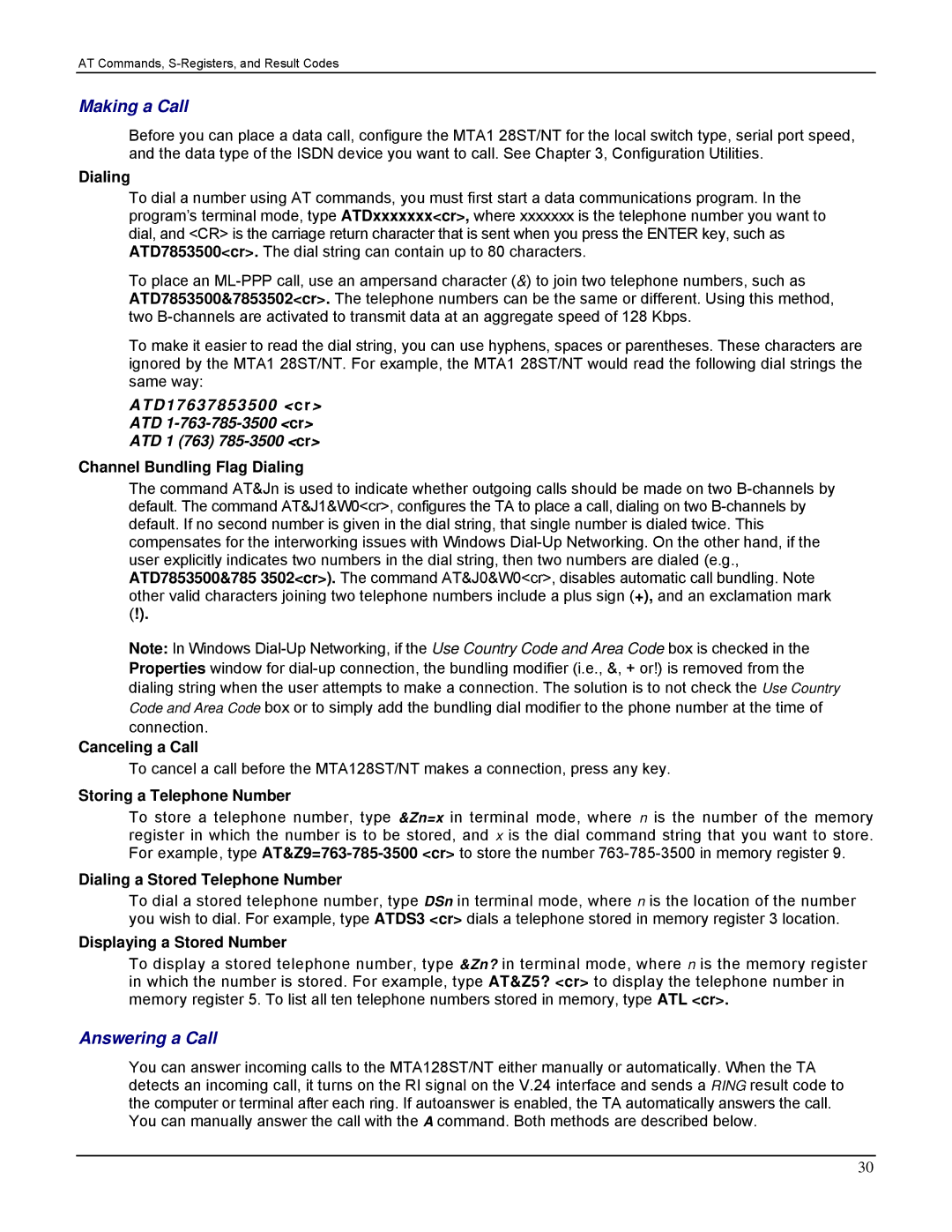
AT Commands, S-Registers, and Result Codes
Making a Call
Before you can place a data call, configure the MTA1 28ST/NT for the local switch type, serial port speed, and the data type of the ISDN device you want to call. See Chapter 3, Configuration Utilities.
Dialing
To dial a number using AT commands, you must first start a data communications program. In the program’s terminal mode, type ATDxxxxxxx<cr>, where xxxxxxx is the telephone number you want to dial, and <CR> is the carriage return character that is sent when you press the ENTER key, such as ATD7853500<cr>. The dial string can contain up to 80 characters.
To place an
To make it easier to read the dial string, you can use hyphens, spaces or parentheses. These characters are ignored by the MTA1 28ST/NT. For example, the MTA1 28ST/NT would read the following dial strings the same way:
ATD17637853500 <cr>
ATD
ATD 1 (763)
Channel Bundling Flag Dialing
The command AT&Jn is used to indicate whether outgoing calls should be made on two
Note: In Windows
Canceling a Call
To cancel a call before the MTA128ST/NT makes a connection, press any key.
Storing a Telephone Number
To store a telephone number, type &Zn=x in terminal mode, where n is the number of the memory register in which the number is to be stored, and x is the dial command string that you want to store. For example, type
Dialing a Stored Telephone Number
To dial a stored telephone number, type DSn in terminal mode, where n is the location of the number you wish to dial. For example, type ATDS3 <cr> dials a telephone stored in memory register 3 location.
Displaying a Stored Number
To display a stored telephone number, type &Zn? in terminal mode, where n is the memory register in which the number is stored. For example, type AT&Z5? <cr> to display the telephone number in memory register 5. To list all ten telephone numbers stored in memory, type ATL <cr>.
Answering a Call
You can answer incoming calls to the MTA128ST/NT either manually or automatically. When the TA detects an incoming call, it turns on the RI signal on the V.24 interface and sends a RING result code to the computer or terminal after each ring. If autoanswer is enabled, the TA automatically answers the call. You can manually answer the call with the A command. Both methods are described below.
30
